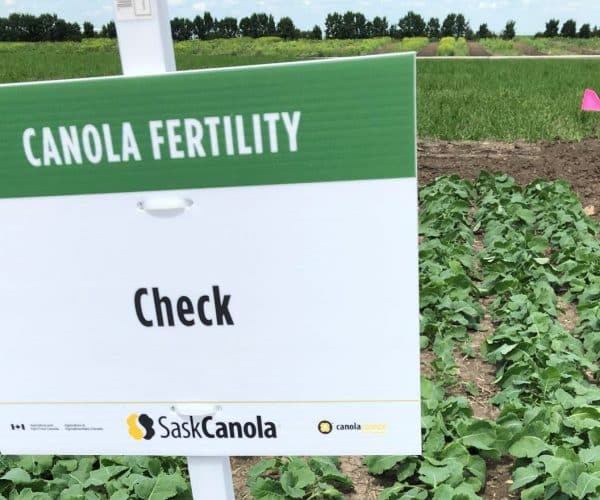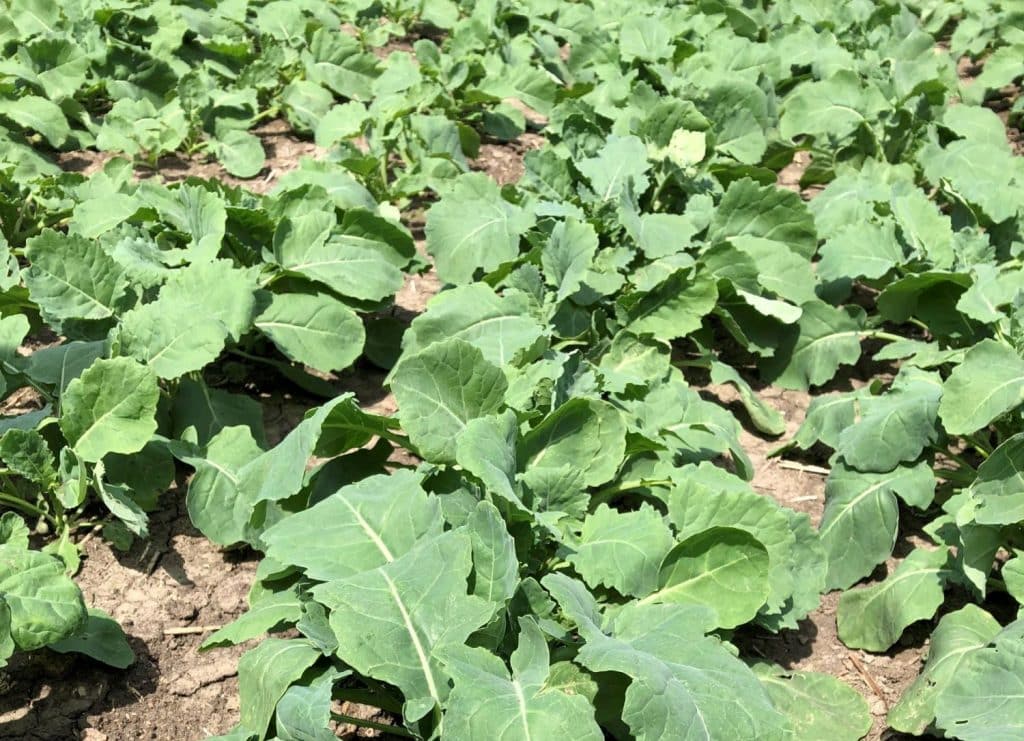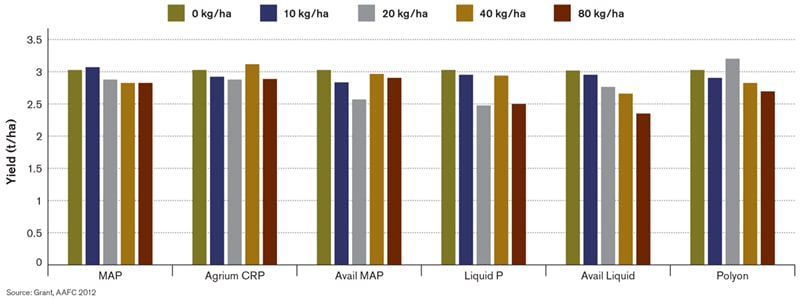Nutrient management is a key part of planning for every growing season, and a major component of 4R nutrient stewardship. This includes considering the Right rate, Right place, Right time and Right source when making nutrient management and fertilizer application decisions for each field, each year. Although micronutrients can also be considered, the primary focus is usually on macronutrients: nitrogen (N), phosphorus (P), potassium (K) and sulphur (S). This blog examines research related to the impact of fertilizer sources and nutrient management on canola production.
Similar to other farm management decisions, complex parameters such as logistics, economics, crop rotation, and environment all factor into the final decision about which fertilizer or nutrient sources should be used. Therefore, there are many aspects for researchers to examine and test out in various soil types and locations over various years. The N, P, K and S sources selected can impact emergence and plant populations, plant biomass and seed yield, and estimated emissions. Soil testing is both important for conducting quality nutrient management research and for commercial canola production. Read on to learn about the results and conclusions from research on these topics.
Benefits ESN can have over standard urea
An earlier multi-year ‘Nitrogen dynamics’ study by Robert Blackshaw in five western Canadian sites (Scott, Melfort, Lethbridge, Lacombe and Beaverlodge) compared the impacts of polymer-coated urea (Environmentally Smart Nitrogen, ESN) with standard urea on canola grown in rotation with barley in a no-till system. Canola was seeded at 150 seeds/m2 and barley at 300 seeds/m2 with a 9” row spacing. Treatments were applied on the same plots in four consecutive years to determine cumulative effects over time. Key results related to fertilizer source and nitrous oxide (N2O) emissions were:
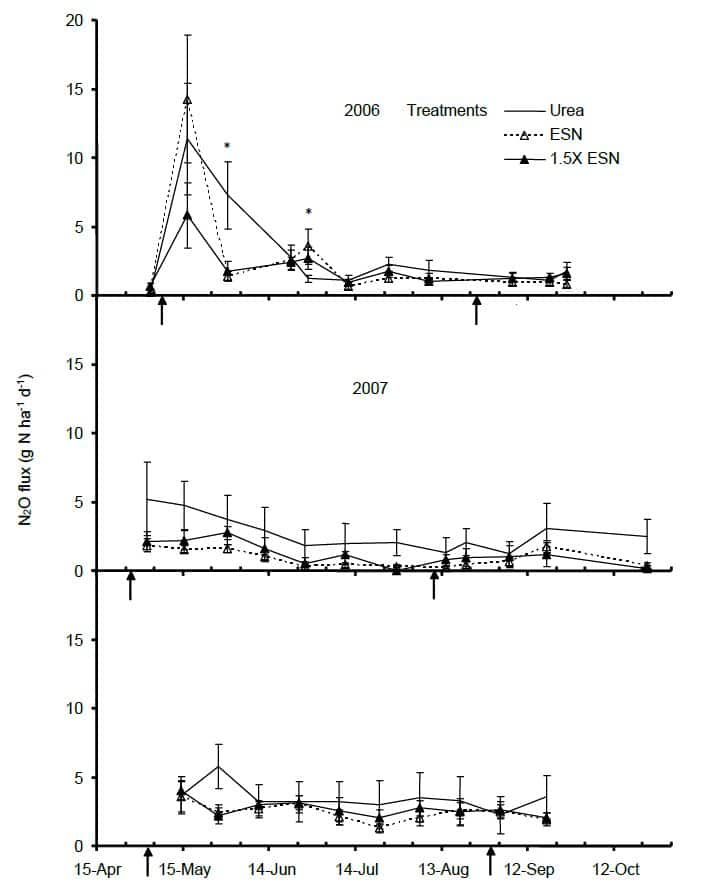
- ESN provided a seed yield increase over urea in 25 per cent of the cases and resulted in similar yields in the other 14 of 20 site-years. In addition, ESN had no impact on canola seed oil concentration.
- Interestingly, weed tissue nitrogen concentration was often lower with ESN than with urea, indicating that crop-weed competition for soil nitrogen might be reduced if ESN were utilized.
- Nitrous oxide emission fluxes varied over the growing season and peak fluxes were always associated with high rainfall events (as shown in the graph).
- Overall, nitrous oxide emissions averaged 20 per cent less with ESN than with urea, likely indicating the advantage of ESN, especially in wet environments.
- Cumulative nitrous oxide emissions over the three growing seasons were low (0.15 to 2.97 kg N/year) for all treatments and sites and “much lower than most other agricultural regions of the world”, as one researcher noted.
To learn about the impact different rates (100% or 150% of recommended levels to reach target yields) urea or polymer-coated urea (ESN) fertilizer had on canola yields, see the project summary, final report and these related publications:
- Nitrous oxide emissions in response to ESN and urea, herbicide management and canola cultivar in a no-till cropping system
- Canola response to ESN and urea in a four-year no-till cropping system
Nitrous oxide emissions evaluations
To learn more about factors thought to contribute to nitrous oxide (N2O) emissions from canola residues and ground canola meal, check out Richard Farrell’s ‘Identifying the mechanisms responsible for greater-than-expected residue-induced N2O emissions from canola and flax‘ study which was completed in 2019. It suggests that proper stubble management as well as the use of inhibitors that slow the transformation of organic-N to nitrate-N (e.g., a nitrification inhibitor) may improve nitrogen use efficiency and reduce emissions.
Impact of nitrogen and sulphur fertilizer sources
The ‘Impact of source and placement of nitrogen and sulphur fertilizers on canola‘ project led by Ramona Mohr investigated two of the 4R components (Right source and Right placement). Field trials in 2017 were conducted on calcareous and non-calcareous soils in Manitoba. In addition to multiple placement methods, various fertilizer sources were compared: ammonium sulphate, ammonium thiosulphate, urea, potassium sulphate, urea ammonium nitrate (with and without Agrotain or ATS), and SuperU and/or urea impregnated with ammonium sulphate. A nitrogen rate of 60 kg/ha was applied to allow differentiation among the nitrogen fertilizer treatments. Results on the impact of fertilizer sources and placement included:
- Pre-plant banded urea increased yield compared to surface application of both conventional and enhanced efficiency fertilizers. The nitrogen fertilizer recovery percentage was typically higher for banded than broadcast granular fertilizers at the calcareous site.
- At the non-calcareous site, the differences among the fertilizer management practices were less frequent (potentially due to lower soil carbonate concentration and slightly lower soil pH, which may have reduced the potential for volatilization losses).
- In some cases in the current study, surface-applied conventional or enhanced efficiency fertilizers performed as well as banded treatments, but in no case did surface-applied fertilizer nitrogen outperform banded urea in terms of nitrogen use efficiency or crop performance.
- Therefore, nitrogen fertilizer decisions require consideration of the relative risk of nitrogen losses and the implications with respect to return per fertilizer dollar cost, along with operational requirements and the direct costs of fertilizer applications.
Learn about the impact of different fertilizer placements in this study on the project page.
Yield responses to sulphur fertilizer sources
Cynthia Grant led the ‘Improving nutrient management in canola and canola-based cropping systems’ research to evaluate improved practices for sulphur (S), phosphate and nitrogen management in canola. The replicated field studies were conducted at locations in each of the three Prairie Provinces, Ontario and Quebec for three years. In addition, greenhouse studies were conducted at the University of Saskatchewan. Key results related to fertilizer sources from this research were:
- There was seedling toxicity evidence with excess rates of monoammonium phosphate (MAP) + ammonium sulphate (AS) or ammonium polyphosphate (APP) + ammonium thiosulphate (ATS) in combination at about half of the site-years.
- The use of the microessentials S15 (MES-15) or the rapid release sulfur (RRS) product occasionally reduced seedling damage but did not generally increase final seed yield as compared to the traditional MAP+AS.
- Canola seed yield response to phosphorus and sulphur varied considerably from site to site and was generally not strongly affected by the source of fertilizer. In contrast, where the seed yield response to sulphur was strong, yield tended to be greater with the ammonium sulphate sources than with the other, possibly more slowly available forms.
- Canola seed yield increased considerably with all sulphate-S treatments compared to the zero-S control, although seed yield tended to be slightly lower in the sideband spring and fall broadcast treatments than the other sulphate-S treatments.
- Compared to zero-S control, seed yield also increased significantly with all rapid release elemental sulphur (RRES) treatments, but the increase was much greater with fall-applied RRES than with spring applied RRES.
- Fall-applied RRES produced only slightly lower and spring applied RRES produced much lower seed yield than the highest yielding spring applied sulphate-S broadcast pre-till or seed row-placed sulphur treatments.
See the final report, on the project page for the results from these other experiments within this project:
- Influence of preceding crop on relative response of canola to nitrogen and sulphur fertilization
- Impact of canola as compared to wheat or flax on specific microbial and soil quality parameters
Evaluation of enhanced efficiency fertilizers
Cynthia Grant also led the ‘Impact of traditional and enhanced efficient phosphorus fertilizers on canola emergence, yield, maturity and quality’ study from 2008 to 2010 which compared seven fertilizer source treatments (including a control with no phosphorus application) applied at four application rates on two locations in Manitoba – one with was a fine sandy loam (FSL) soil and one with a clay loam (CL) soil. Nitrogen (N) and sulphur (S) were applied before seeding to ensure an adequate nutrient supply for optimum yield, based on soil test results. Pre-plant banding was used to avoid any risk of seedling damage from the nitrogen. The results reported:
- There was little difference amongst the effects of phosphorus sources on canola seed yield. Where seedling damage occurred, use of polymer coated MAP reduced the risk.
- Seedling damage occurred with high rates of applied phosphorus unless soil conditions were very wet, with damage being particularly evident with liquid ammonium polyphosphate.
- Overall, the enhanced efficiency phosphorus fertilizers evaluated in this study provided little economic benefit compared to traditional monoammonium phosphate (MAP) or Avail-treated ammonium polyphosphate (APP) fertilizers. However, the polymer coated controlled-release MAP (CRP) product may reduce the risk of seedling toxicity if it is necessary to exceed safe levels of seed-placed phosphorus (P) fertilizer to optimize crop yield.
Learn about the impact of different applications rate in the final report, on the project page.
Green manure as an alternative nutrient source
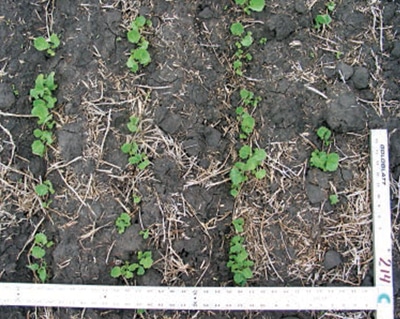
Considering alternative nitrogen fertilizer sources, John O’Donovan led the four-year ‘Legume crops to improve soil fertility for enhanced canola production’ study at seven locations (Beaverlodge, AB, Lacombe, AB, Lethbridge, AB, Scott, SK, Indian Head, SK, Swift Current, SK, and Brandon, MB). In the first year, peas, lentils, faba beans, wheat and canola were all direct seeded using zero tillage seeders with knife openers. Canola and wheat were fertilized according to the soil test recommendation and legumes did not receive fertilizer nitrogen. The effects on barley and canola yield were measured for the following three years (with malting barley was seeded into the canola stubble in 2011 and the trial seeded to canola again in 2012). The following results were shared from this project:
- Growing legume crops in rotation with canola and barley can provide a viable alternative to an inorganic nitrogen source. Legumes can provide a nitrogen benefit to the following crop, but a consistent, measurable benefit does not extend to crops grown two and three years afterward.
- When averaged across locations, fall nitrate levels were highest after faba bean green manure and lowest after wheat. Effects of preceding crop on nitrate-N persisted through the following season of canola production to the subsequent fall. Faba bean green manure also resulted in subsequent crops having the highest yields- but it is unlikely that this would be economically viable since growers would not accrue any monetary returns during the year the green manure was grown.
To learn about the impact of different fertilizer rates on canola seed year, see the final report on the project page.
Related nutrient management articles and research
For more information on nutrient management practices for growers, check out:
- The Canola Digest ‘What fertilizer practices are the worst for losses‘ article.
- The Canola Council of Canada’s 4r Nutrient stewardship practices section of the Canola Encyclopedia.
To investigate fertility and nutrient management research in progress, check out these projects:
- Optimal source, placement and application timing for yield and reduction of greenhouse gas footprint for canola production on light texture soils
- Making of a more sustainable canola: using genetic diversity to improve nitrogen use efficiency
- Improving nitrogen use efficiency (NUE) and soil sustainability in canola production across Canada
- Canola frequency effects on nutrient turnover and root-microbe interactions
- Understanding canola root morphology and microbiomes in response to soil phosphorus fertility
Published October 21, 2021



